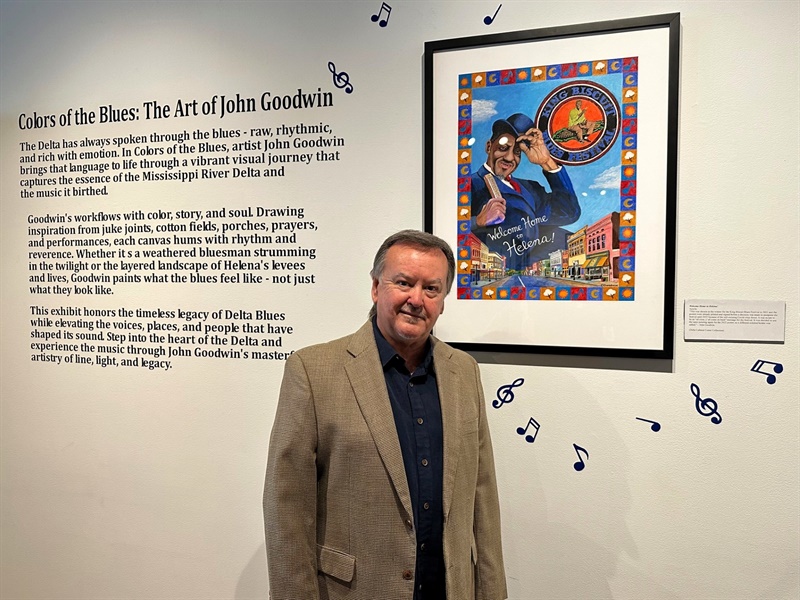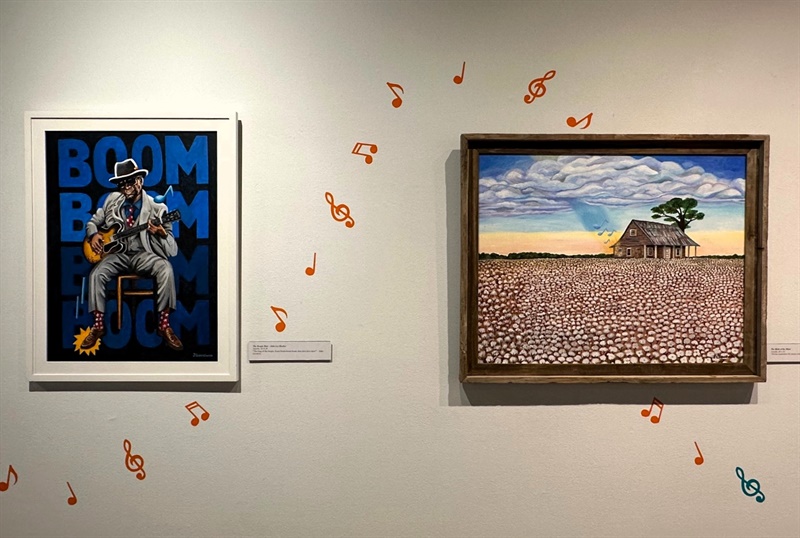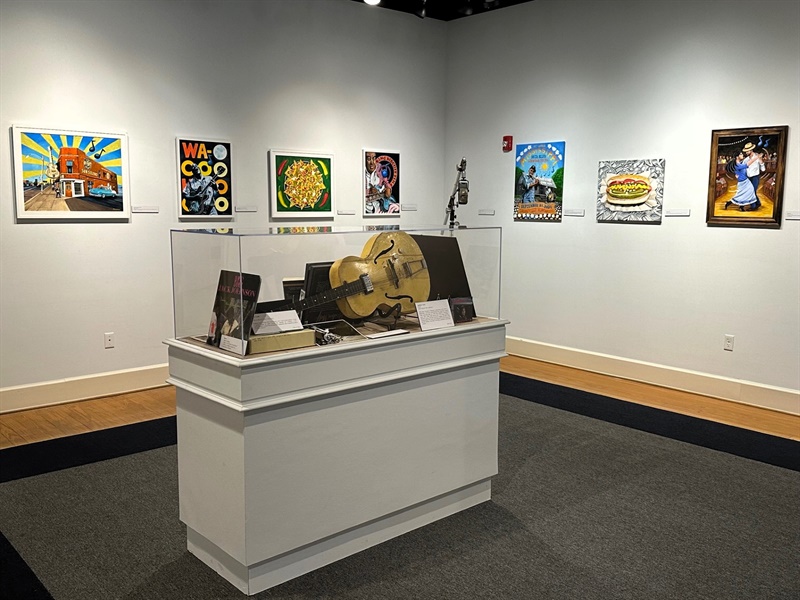Current Exhibits
The Delta Cultural Center provides visitors with changing exhibits which expand on the topics stated in our mission. Changing exhibits rotate on a regular basis with new and fresh exhibits every 1 to 6 months. Exhibits vary from modern art and photography to historical artifacts. Many changing exhibits are developed by Center Staff while others are traveling exhibits created by outside organizations.
For exhibit openings and programs, access our Calendar of Events.
Building For Tomorrow: E.C. Morris, Centennial Church and the Black Baptists During Jim Crow
This extraordinary new exhibition explores the role of the Baptist Church in the lives of African Americans during the turbulent period of Jim Crow, as they navigated the difficulties and hardships of a segregated country. Visitors, as they enter the South Gallery of the Delta Cultural Center, will first notice the large replica stain glass window that symbolizes the church. It is if they have been reborn in the past and are looking into this window to see what is happening in a church of that era. From that point, guests will be able to read and study numerous historical panels that depict the expansion of the Baptist Church throughout the Arkansas Delta and into the lives of African Americans.
Activists such as Booker T. Washington and others used this religious awakening to further the cause of reform, but it was through the tireless labor of one Arkansan that the church rose to new levels of importance. That Arkansan was the Reverend Elias Camp Morris, who rose to national prominence through his work with the National Baptist Convention. In addition to his work in politics, Morris was the pastor at Centennial Baptist Church in Helena, Arkansas from 1879 to his death in 1922. Centennial was an example of an early megachurch with nearly a thousand members and was a beacon of light for all African Americans in the area. E.C. Morris was also president of the Black Arkansas Baptist State Convention for 35 years and helped start a seminary in Little Rock that eventually became Arkansas Baptist College. There is a life size replica of Morris at his podium and interactive displays which feature a number of his speeches that visitors may listen to. In addition to the church, there are also displays and information panels dealing with the role of fraternal organizations like the Knights of Pythias and the Masons.
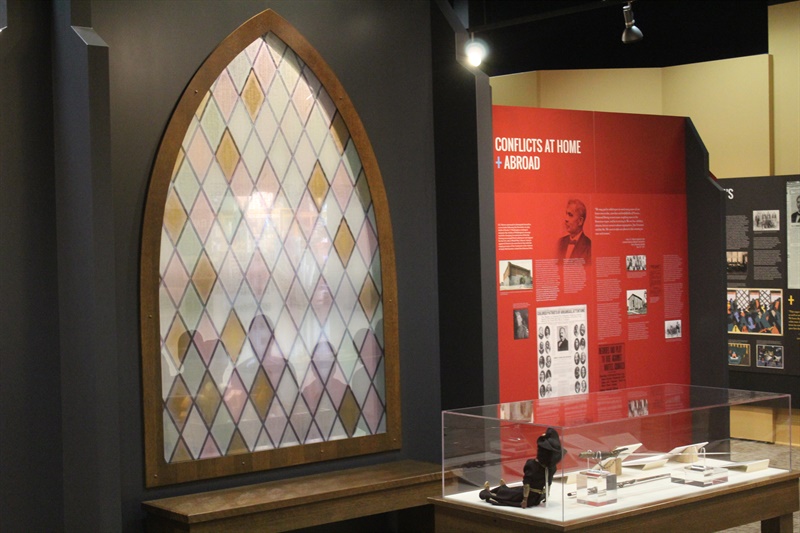
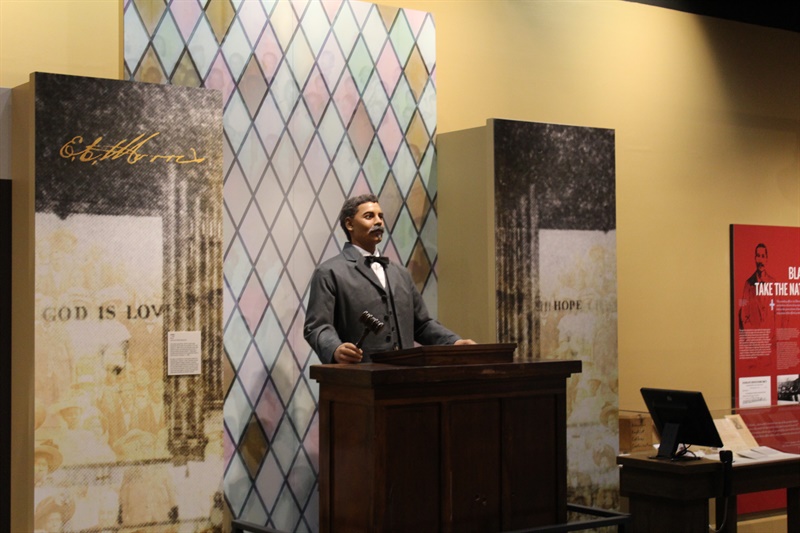
Colors of the Blues: The Art of John Goodwin
“Colors of the Blues: The Art of John Goodwin” is the latest art exhibition hosted in the central gallery of the DCC Visitor Center located at 141 Cherry Street in historic Helena-West Helena, Arkansas. It consists of twenty-eight paintings that range from food to music that are culturally significant to the Delta. In addition, there are numerous artifacts on display that add context to the art. Examples include a guitar and knife used by CeDell Davis and a school yearbook with photographs of Levon Helm. This exhibition will run from September 13 through December 27, 2025.
John Goodwin was born in El Dorado, Arkansas and earned a BFA in Graphic Design from Louisiana Tech University. Although he has worked in other fields, Goodwin refers to himself as a full-time artist today. His artwork has been featured at the King Biscuit Blues Festival, Delta Roots Music Festival, Hot Springs Area Cultural Alliance’s Arts & The Park Outdoor Exhibit, and the Fort Smith Regional Art Museum’s Inclusive Exhibit. In July 2025, John Goodwin’s artwork was unveiled as the official poster for the 48th annual Mississippi Delta Blues Festival.
The Delta has always spoken through the blues – raw, rhythmic, and rich with emotion. In “Colors of the Blues,” John Goodwin brings that language to life through a vibrant visual journey that captures the essence of the Mississippi River Delta and the music it birthed. Goodwin’s artwork flows with color, story, and soul. Drawing inspiration from juke joints, cotton fields, porches, prayers, andperformances, each canvas hums with rhythm and reverence. Whether it’s a weathered bluesman strumming in the twilight or the layered landscape of Helena’s levee and lives, Goodwin paints what the blues feel like – not just what they look like.
